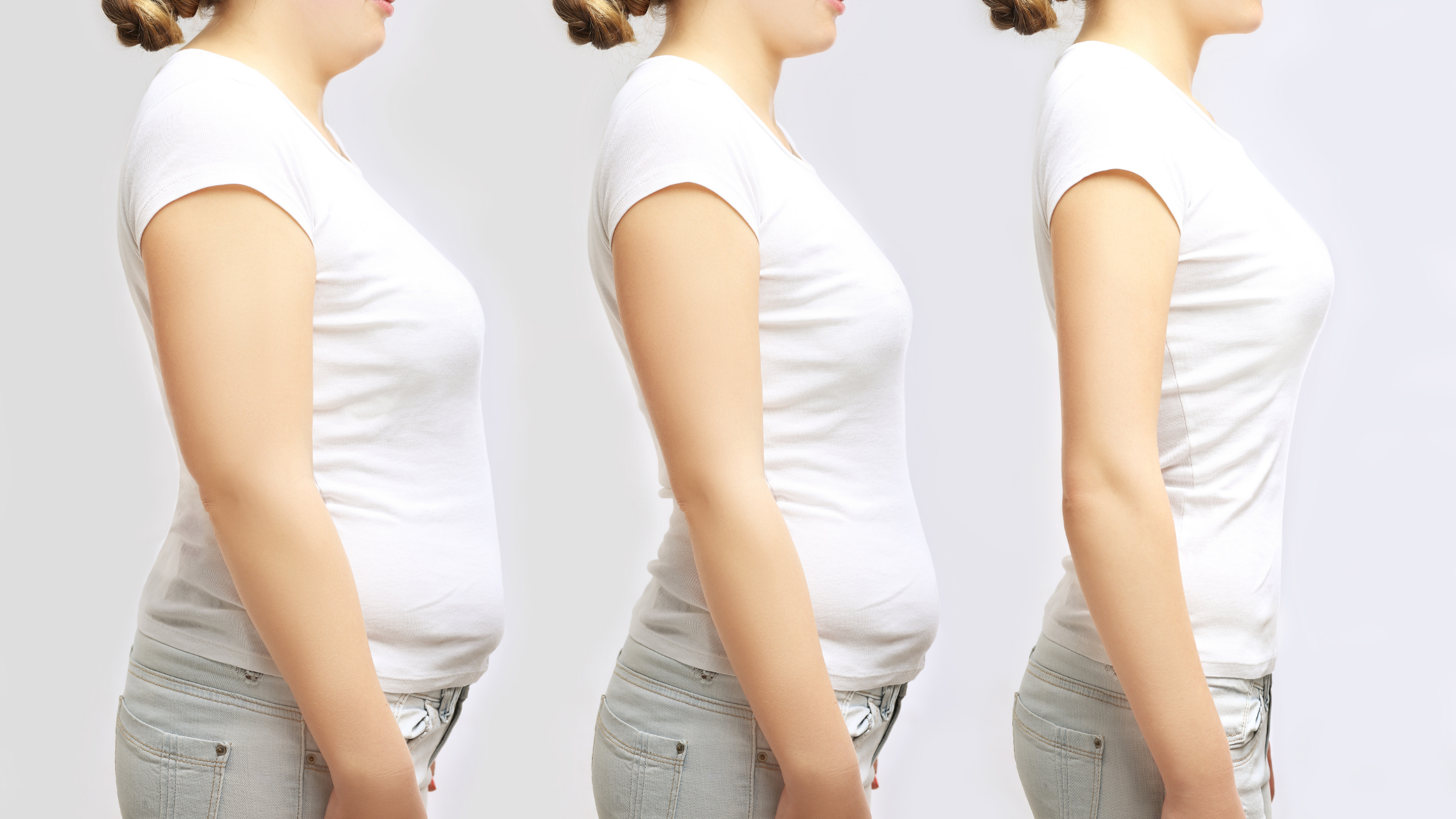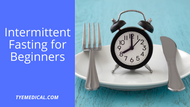Intermittent Fasting for Beginners: 4 Methods to Consider
Written by TYE Medical on Nov 8th 2021
You probably never imagined you would need tips on intermittent fasting for beginners. But today, abstaining from food according to a schedule is a wildly popular way to lose weight. Keep in mind that it's not a diet because it doesn't specify what foods to eat or avoid. Instead, it's a timed approach to eating that includes alternating periods of eating and fasting (or minimal food consumption).
Periodically restricting food helps you eat fewer calories overall, which is one reason it leads to weight loss. Longer periods of fasting also trigger your metabolism to burn something other than glucose (preferably fat). Several studies suggest it has a profound impact on your brain and can help you live longer by preventing diseases like diabetes and cardiovascular disease.
Here's what you need to know about each method.
Tips for Getting Started
Whatever eating schedule you choose, it's best to stick with it for at least a month before deciding if it's effective for weight loss (unless there are health reasons for stopping or it's triggering binge eating). Sometimes it takes your body a little time to show results, so don't give up on a method too soon.
Also, there are no dietary restrictions with any method, which means that you decide what's on the menu and when it's time to eat. If your goal is to lose weight or improve health, then you'll want to include plenty of vegetables, whole grains, and other high-fiber foods. Binging or overindulging in unhealthy food will only hinder results.
And don't forget to drink plenty of water!
1. Eat Stop Eat
Developed by Brad Pilon, this is an advanced approach and might not be the best type of intermittent fasting for beginners (but you can give it a try!). Going without food for 24 straight hours can cause extreme hunger that might be difficult to overcome if you're new to fasting.
This method has two rules:
- Fast for 24 hours, two days per week
- Only fast on non-consecutive days (not two days in a row)
Eat Stop Eat only requires that you abstain from food for 24 hours (including sleeping time). You get to choose which days of the week to fast and what hour to begin.
2. The Warrior Diet

Ori Hofmekler established this method back in 2001 and based it on the eating schedule of ancient warriors who ate very little during the day and feasted in the evening. Again, it's not really a diet, despite its name.
If you take this approach, you'll eat tiny amounts of protein and vegetables during the 20-hour fast (which includes overnight hours) and then eat whatever you want within a four-hour window in the evening. During the day, you're encouraged to have small servings of dairy products, hard-boiled eggs, and raw produce. During fasting hours, you can also drink non-calorie beverages (water, unsweetened tea, diet soda, etc.).
While you're free to have whatever you want in the four-hour feeding window, it's recommended that you make healthy choices if you want the weight loss and health benefits of intermittent fasting.
As you might suspect, there are challenges. Going 20 hours every day (12 if you subtract eight hours of sleep) with little food can make you hungry enough to overindulge during your four-hour feeding window. This could be counterproductive if you take it too far. Keep this in mind if you try this method.
3. The 16/8 Method

This approach is what most people mean when referring to intermittent fasting, and it's especially popular for weight loss. It's also an effective type of intermittent fasting for beginners.
Like The Warrior Diet, it restricts your calorie consumption window and designates fasting hours. With the 16/8 method, you abstain from food for 16 hours a day (including overnight) and only consume food and caloric beverages during the eight hours of fasting.
If you don't binge or overeat during the eight-hour window, you'll intake fewer calories since you're going a longer period without food. As with all intermittent fasting, the elongated fasting period can also stimulate your metabolism.
Some eating schedule examples include:
- 9 a.m. to 5 p.m.
- 10 a.m. to 6 p.m.
- 11 a.m. to 7 p.m.
- 12 p.m. to 8 p.m.
You can schedule your eating window around the meal you enjoy the most. Breakfast lovers might want to start their window earlier in the day. If you can't do without your supper, adjust your window to include it and skip breakfast.
4. The 5:2 Method

This approach is also a challenging type of intermittent fasting for beginners. For five days, you eat regularly or consume the appropriate number of calories for your body type. And the other two days, you eat only a quarter of your regular calories. If you're on a 2,000-calorie diet, then you'd only eat 500 calories twice weekly.
You're not restricted to an eating window, and you get to choose which days to fast. However, it can be tough to eat 500 calories (or less if you eat a lower calorie diet) for an entire day twice each week. You might be tempted to binge after breaking your fast. If this happens, try choosing a different option, like the 16/8 method.
Intermittent Fasting Improves Stress Incontinence

When you incorporate periods of fasting into your week, it puts your body into fat-burning mode, which seriously promotes weight loss. And stress incontinence is one of the types of bladder leakage that most benefits from shedding pounds.
Even small reductions in weight can begin improving stress incontinence symptoms. This is because excess weight puts pressure on abdominal organs, including the bladder, making it difficult to retain urine when you cough, sneeze, laugh or are otherwise active. (For more information on weight loss and incontinence, check out our article .)
Just be sure that you select an intermittent fasting method that's best suited to your health, schedule, and lifestyle. If you have a health condition or have had an eating disorder, discuss intermittent fasting with your doctor first.
If you're battling bladder leaks, shop our online store for premium products that come with free and discreet shipping.


